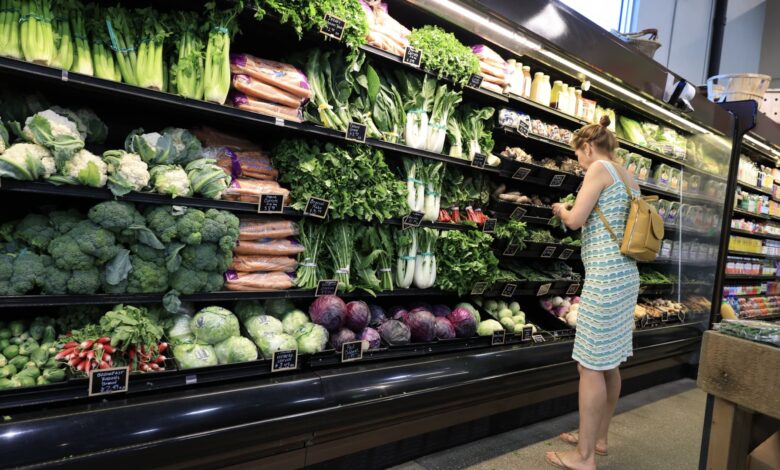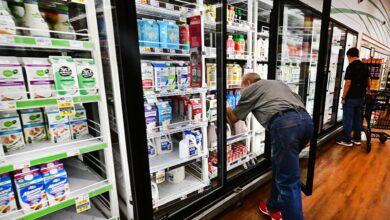Consumer prices rose at annual rate of 2.9% in August, as weekly jobless claims jump

Vegetables on display in a grocery store on August 15, 2025 in Delray Beach, Florida.
Joe Raedle | Getty Images
Prices consumers pay for a variety of goods and services moved higher than expected in August while jobless claims accelerated, providing challenging economic signals for the Federal Reserve before its meeting next week.
The consumer price index posted a seasonally adjusted 0.4% increase for the month, double the prior month, putting the annual inflation rate at 2.9%, up 0.2 percentage point from the prior month and the highest reading since January. Economists surveyed by Dow Jones had been looking for respective readings of 0.3% and 2.9%.
For the vital core reading that excludes food and energy, the August gain was 0.3%, putting the 12-month figure at 3.1%, both as forecast. Fed officials consider core to be a better gauge of long-run trends. The central bank’s inflation target is 2%.
On employment, the Labor Department reported a surprise increase in weekly unemployment compensation filings to a seasonally adjusted 263,000 for the week ending Sept. 6, higher than the 235,000 estimate and up 27,000 from the prior period.
The reports provide the final pieces of a complicated data puzzle that central bankers will review at their two-day policy meeting that concludes Sept. 17.
The closely watched CPI reading saw its biggest gain from a 0.4% increase in shelter costs, which account for about one-third of the weighting in the index. Food prices jumped 0.5% while energy was up 0.7% as gasoline rose 1.9%.
Market pricing indicates a 100% certainty that the Fed will lower its benchmark interest rate, currently targeted between 4.25%-4.5%. However, there has been a slight implied chance that the Fed might choose to deviate from its usual quarter percentage point move and cut by half a point considering weakness in the labor market this year and subdued inflation readings.
Fed officials have been watching the inflation data closely for clues on the impact from President Donald Trump’s tariffs. There has been some visible pass-through from the duties, though inflation figures have been relatively well-behaved. The BLS reported Wednesday that producer prices actually declined 0.1% in August.
Tariff-sensitive vehicle prices saw monthly increases, with new vehicles up 0.3%. Used cars and trucks, which are generally not influenced by tariffs, rose 1%.
This is breaking news. Please refresh for updates.




